Parachutist’s views of the Nectandra Cloud Forest
I am inaugurating this blog series with a virtual visit to Nectandra Cloud Forest, to set the stage for an introduction to an ecosystem that’s is rapidly shrinking. Thirty years ago, when the scientists first described what is a cloud forest, they estimated around 11% of the world tropical rain forests to be cloud forests — forests that are immersed in cloud most of the year. Today, it is estimated that only 1.5% is left and disappearing. At today’s rate of climate change, most of it will be gone before we know it. Rather than lament its impending loss, I would like to use the time and opportunity to celebrate this Garden of Eden and to share with you our experiences, the highlights and the sense of wonderment living in such an environment.
Imagine yourself dangling from a parachute, floating straight down on Nectandra forest looking down through your feet at 150 m (500ft) in the air.
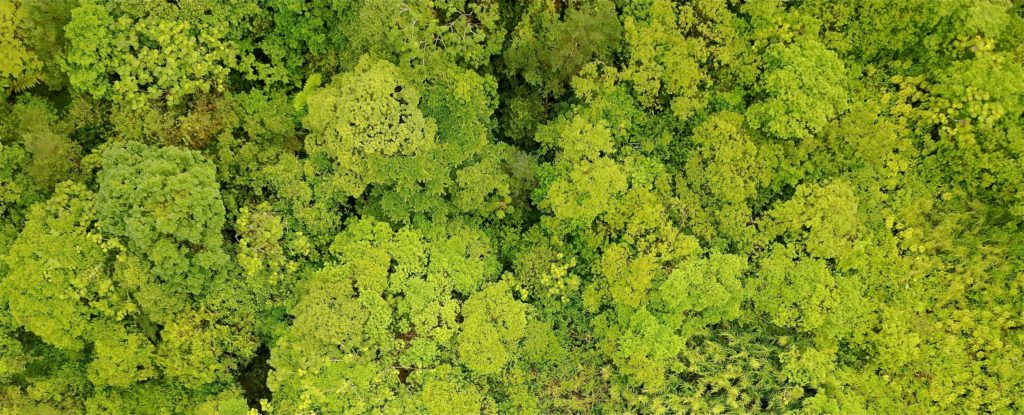
You are about to land on what appears to be an immense head of broccoli where each tree constitutes a floret. But unlike the florets, the trees in the canopy are not clones. No two look alike because they are likely to be of different species. They come in all shades of green, each with a different texture and coarseness.
In the image above, the tightly packed tree canopy shows hardly any gaps between trees and even less between foliage. Tree branches are not visible. In fact, the degree of gaps in the forest can be taken as an inverse measure of the density of the forest. The denser the trees, the less gap areas in the canopy. Scientific computer software can count the black or gap pixels per unit screen area as a way to measure and monitor forest growth in drone images .
Drop down another 50 m and look ahead to get a different view.
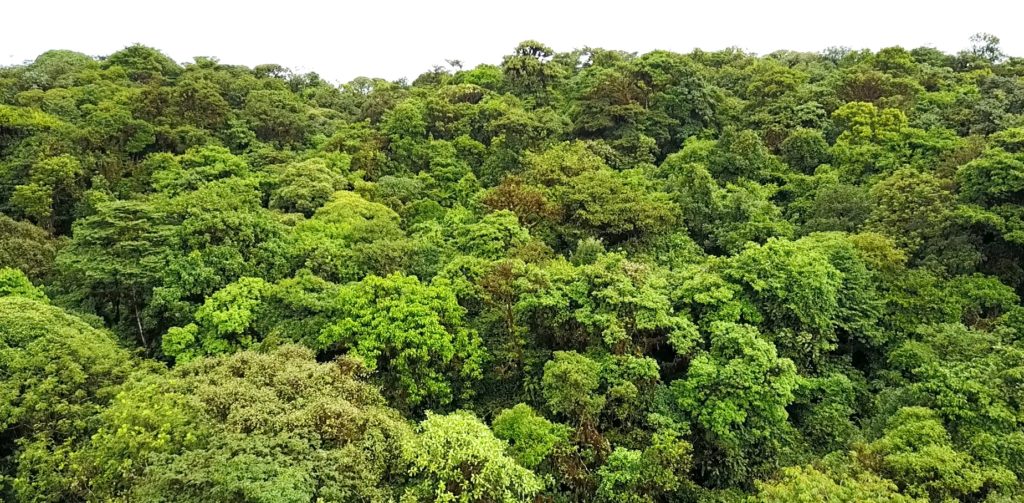
The trees appear now more varying in shapes, in heights and no longer pure green. Under the oblique light, some of the trees definitely take on a brownish hue. Leaves changing color? Dying trees? Look closer and you will note that the brownish green is not foliage, but thick mats of plants on the branches and trunks of trees. The brownish growth are hundreds of intergrowing species of the liverworts and mosses — the tiny iconic plants of the cloud forest known collectively as the bryophytes.
A startling different view emerges as you descend to about 15m from the ground. You are now just below the upper canopy, looking through the tangles of the branches. The presence of the bryophytes is overwhelming.
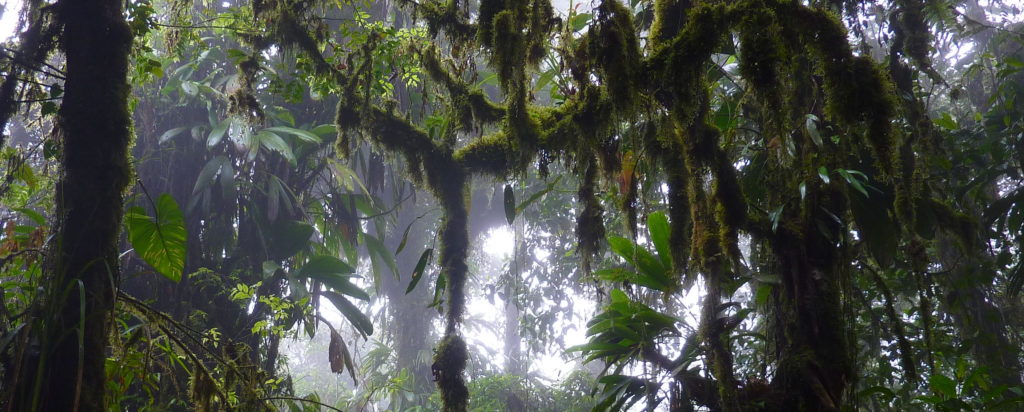
The accumulating bryophytes and plant detritus provide the necessary nutrients and loamy support for other epiphytic flora (plants that grow on other plants). Add the steady, constant misting during the day all year to the mix, plants with aerial roots can now grow and thrive. Well known examples are the bromeliads (air plants), orchids, ferns, lianas, even begonias, to name just a few. Shown in the photo immediately below are impressive inflorescence of hanging orchids Oncidium sp. (see inset) on the left and an endemic Columnea macrophylla on the right (in the same family as african violets). Visitors on the ground are likely to miss this floral hanging garden because of the altitude.
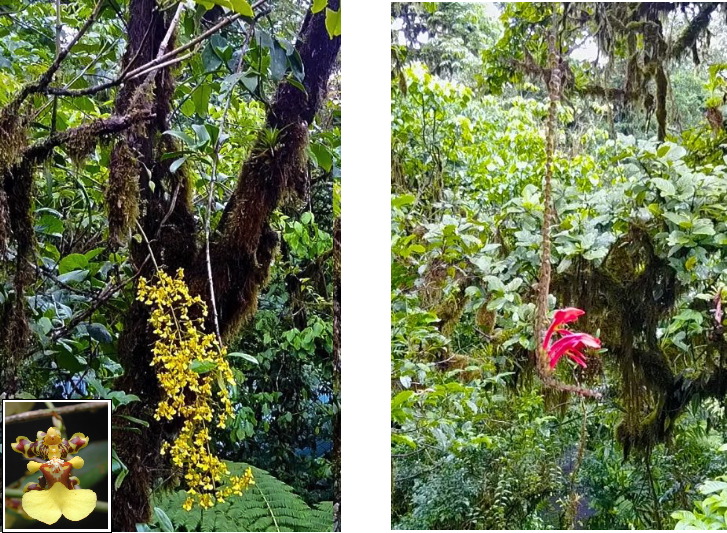
From this height another striking, eye-catching group of cloud forest iconic trees are the tree ferns. The dozen species of tree ferns at Nectandra are beauties to behold, with their majestically large fronds (~1.5m) and great stature (up to 10-15 m).
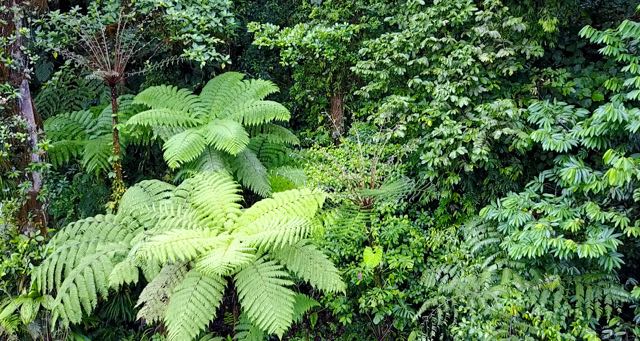
Let’s drop down to the forest floor. Now look up. The view is typically through thick foliage of understory plants, and through epiphytes-laden branches. From this vantage point, nearly every surface is layered with bryophytes and epiphytes.
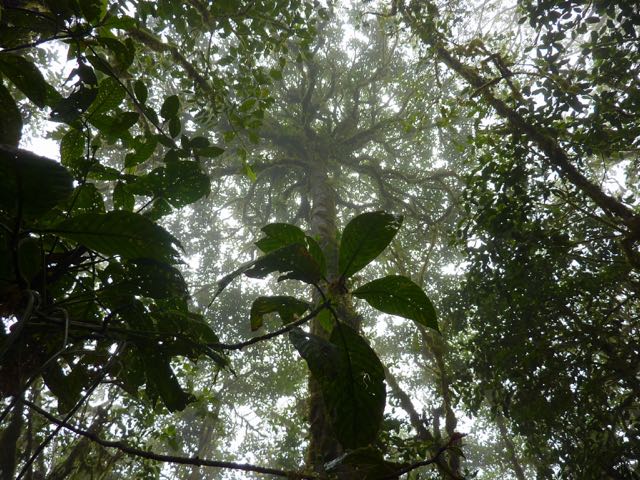
Look down, more bryophytes, on tree trunks, branches, leaves, rocks and soil…
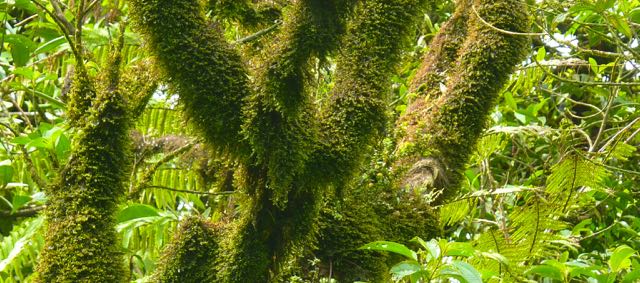
Zoom in on the tree trunks, now the moss (below left) can be distinguished from the intermingling liverworts on the right, two representatives species among hundreds on the reserve.
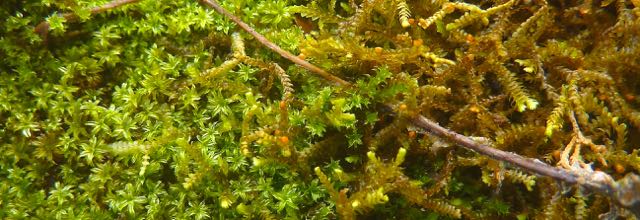
We have come to the end of our vertical tour. On your future visits, I hope to introduce you to many more forest features and riveting fellow residents. Please check in for our next blog for more unconventional virtual tours of the Nectandra Cloud Forest.